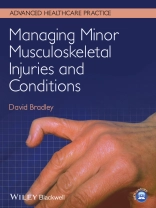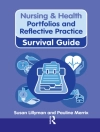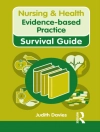Emergency care professionals are increasingly expected to work autonomously when caring for patients with minor musculoskeletal injuries and conditions. They have to be able to competently and safely take a patient’s history, examine, diagnose and provide management of these conditions. Managing Minor Musculoskeletal Injuries and Conditions pulls together all these aspects of care into one practical, easy-to-read text.
Aimed principally at students undertaking minor injury and emergency care courses, this title is a comprehensive manual of minor musculoskeletal injuries and conditions, highly illustrated throughout and containing a variety of activities and exercises.
Key features:
- Includes material on study skills, distance and self-directed learning to support both students on formal courses and those working alone
- Extensive learning features, including a range of activities, hints and tips and multiple-choice questions
- Supported by a companion website with further self-assessment, downloadable X-ray Power Point slides, picture tutorials, practice history-taking documentation and legal scenarios
- Enables more effective management and care of patients with musculoskeletal injuries
Table des matières
Dedication, iv
Acknowledgements, v
About the companion website, vi
Part 1 The background
1 How to use this book, 3
2 Taking a patient’s history, 14
3 An introduction to examining your patient, 31
4 Patient documentation for minor injuries, 45
Part 2 The upper body
5 The neck, 59
6 The shoulder, 87
7 The elbow, 132
8 The wrist and hand, 169
Part 3 The lower body
9 The lower back and hip, 235
10 The knee and leg, 271
11 The ankle and foot, 327
Answers to multiple choice questions, 373
Index, 377
A propos de l’auteur
David Bradley was formerly a Senior Lecturer in Emergency Care at Liverpool John Moores University, Liverpool, UK.












